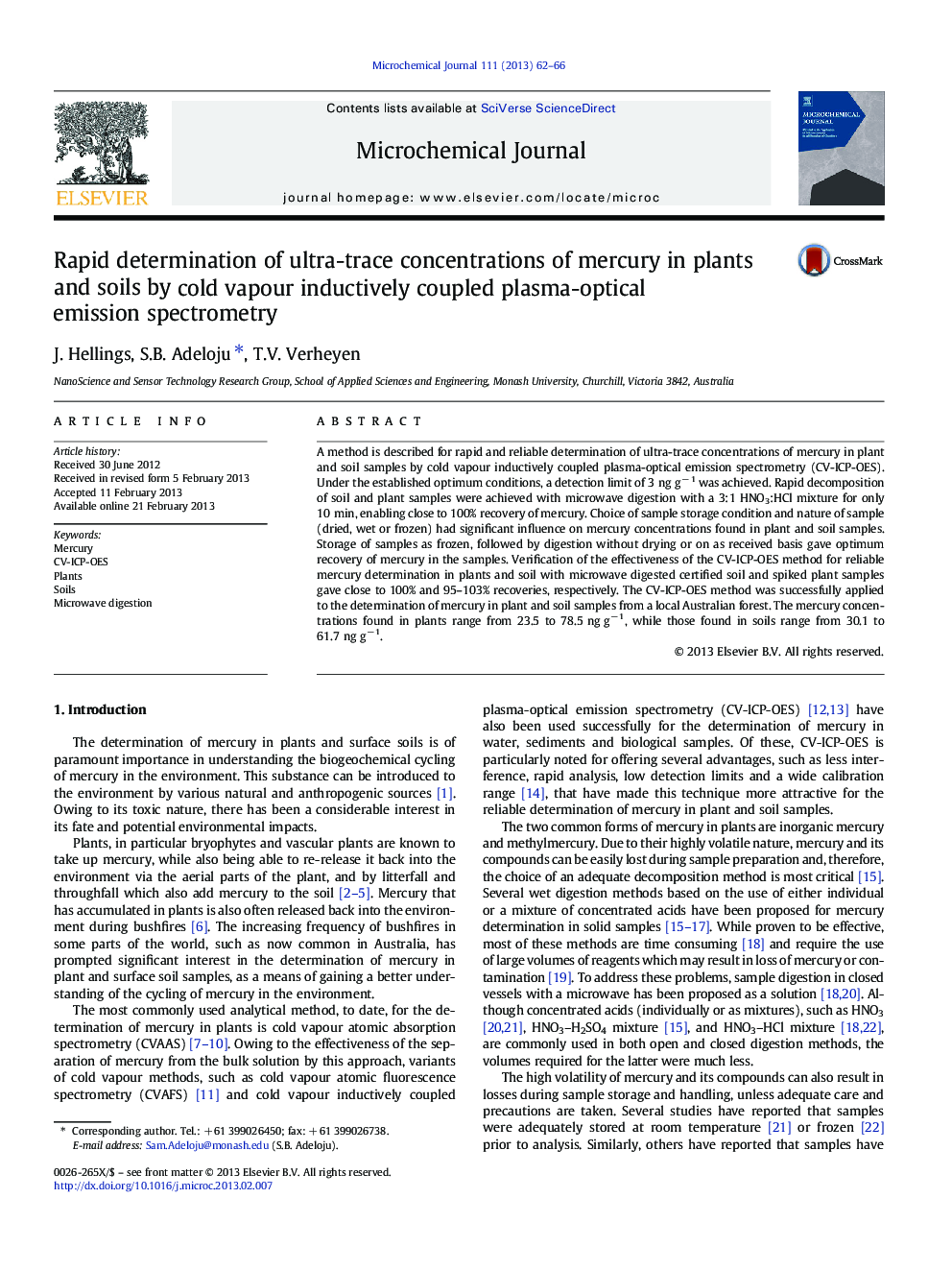| Article ID | Journal | Published Year | Pages | File Type |
|---|---|---|---|---|
| 1227801 | Microchemical Journal | 2013 | 5 Pages |
A method is described for rapid and reliable determination of ultra-trace concentrations of mercury in plant and soil samples by cold vapour inductively coupled plasma-optical emission spectrometry (CV-ICP-OES). Under the established optimum conditions, a detection limit of 3 ng g− 1 was achieved. Rapid decomposition of soil and plant samples were achieved with microwave digestion with a 3:1 HNO3:HCl mixture for only 10 min, enabling close to 100% recovery of mercury. Choice of sample storage condition and nature of sample (dried, wet or frozen) had significant influence on mercury concentrations found in plant and soil samples. Storage of samples as frozen, followed by digestion without drying or on as received basis gave optimum recovery of mercury in the samples. Verification of the effectiveness of the CV-ICP-OES method for reliable mercury determination in plants and soil with microwave digested certified soil and spiked plant samples gave close to 100% and 95–103% recoveries, respectively. The CV-ICP-OES method was successfully applied to the determination of mercury in plant and soil samples from a local Australian forest. The mercury concentrations found in plants range from 23.5 to 78.5 ng g− 1, while those found in soils range from 30.1 to 61.7 ng g− 1.
► Rapid and reliable ultra-trace determination of mercury in plant and soil samples by CV-ICP-OES ► Rapid microwave digestion of plant and soil samples with achievement 100% recovery of Hg ► Identified influence of choice of sample storage condition and nature of sample ► Successful determination of mercury in plant and soil samples from a local Australian forest
